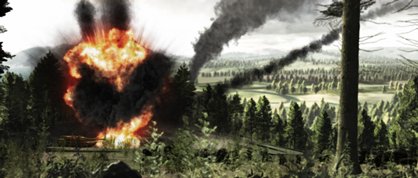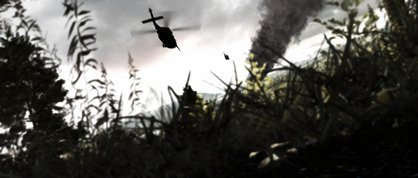Operation Flashpoint 2: Dragon Rising
It’s going to be a bumpy ride
Clive Lindop takes up the story. He was hired specifically by Codemasters to build the battle AI. In his job interview, he says, he was asked “how would you go about building Operation Flashpoint 2?” His answer: “there’s no other way to do it: to build everything from scratch, the technology, the art assets, the island, and the AI.” So Codemasters began reconfiguring themselves for what was going to be their largest, most expensive, riskiest project ever. A studio in Kuala Lumpur was set up, employing 70 artists specifically to build the ultra-detailed weapons and vehicles that the game would feature. Two full-time researchers were hired to ensure that the dynamics and tactics of each side would match current doctrines. And the tech teams began crafting a game engine, using, as one of its elements, technology from Codemasters’ well-regarded racing games. All they had to work with was the renderer: the code that produces images of landscapes. The terrain engine, physics models, weather patterns, lighting... everything else would need to be built from scratch.

The art team’s aim to create an atmosphere of heavy, muted war is best demonstrated in their attention to the impact of violence. Laser-guided bombs and artillery (you’ll be able to call down a limited number of off-map strikes during the campaign) leave the target area devastated, and produce plumes of charcoal thick smoke that climb upwards of 15 stories, and are visible for miles. Mortars and grenades (yes, they’re included, unlike in previous Flashpoint games) will tear flesh apart. Limbs will separate, and the blood from flesh wounds seep through clothing. How gruesome they can allow themselves to be? Bran nods, clearly concerned. “It’s a moral issue: we have artists who’ve been quite affected by the images of injuries they’re working from.” Gratuitous imagery is not what they’re looking for. Occasionally horrific: yes. Realistic, definitely.
The ludicrous attention to detail presses hard on the 3D artists who make up the majority of the Flashpoint team. One artist has been tasked with building trees – leaf by leaf. Codemasters experimented with software to auto-generate their foliage, but couldn’t get the right results, nor would the light shine through correctly. So instead, all the forestry had to be hand-drawn. Some artists spend their days equipping and texturing the soldiers. A soldier’s kit has to be accurate: they work from acres of current photography and footage. When the US Army changed their camouflage pattern to a slightly more pixilated version, the artists just sucked it up and redid their infantry.

It’s at this point, as our expectations reach sky-high proportions, that Codemasters show their prototype. It comes with a caveat: it’s still being worked on. This is the most basic version of the game – a testbed without the graphical detail. The terrain is bare, but real. There is a couple of completed vehicles – Bradley APCs and trucks that hug the ground and bounce along the curves and bumps of the landscape, but don’t have the accurate cockpits the game will eventually include. Brant looks into the air as the sun whips through the sky, demonstrating the day and night cycle. As the sun sets, the shadows lengthen – accurately playing over our soldiers’ weapons and ammo bags. Brant turns his soldier to look at a hill that flows into cliffs, at least three miles off. A few button taps, and Brant warps to the hill. From here, we can just make out the little group of buildings where we started.
Sign up to the GamesRadar+ Newsletter
Weekly digests, tales from the communities you love, and more


